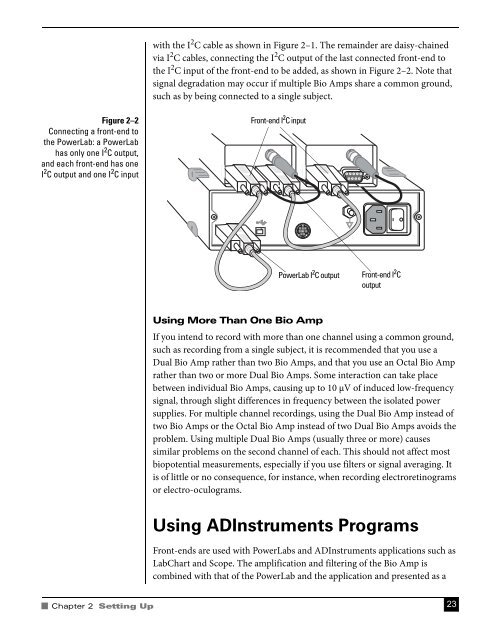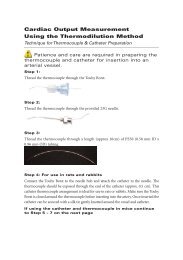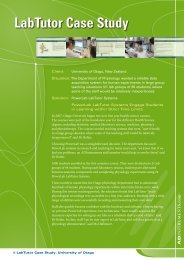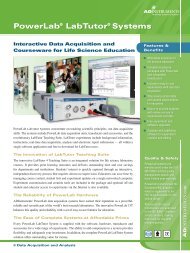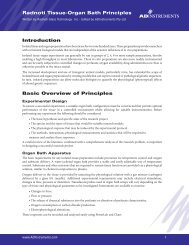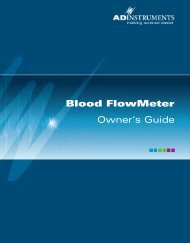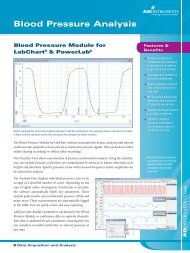Bio Amp Owner's Guide - ADInstruments
Bio Amp Owner's Guide - ADInstruments
Bio Amp Owner's Guide - ADInstruments
Create successful ePaper yourself
Turn your PDF publications into a flip-book with our unique Google optimized e-Paper software.
with the I 2 C cable as shown in Figure 2–1. The remainder are daisy-chainedvia I 2 C cables, connecting the I 2 C output of the last connected front-end tothe I 2 C input of the front-end to be added, as shown in Figure 2–2. Note thatsignal degradation may occur if multiple <strong>Bio</strong> <strong>Amp</strong>s share a common ground,such as by being connected to a single subject.Figure 2–2Connecting a front-end tothe PowerLab: a PowerLabhas only one I 2 C output,and each front-end has oneI 2 C output and one I 2 C inputFront-end I 2 C inputPowerLab I 2 C outputFront-end I 2 CoutputUsing More Than One <strong>Bio</strong> <strong>Amp</strong>If you intend to record with more than one channel using a common ground,such as recording from a single subject, it is recommended that you use aDual <strong>Bio</strong> <strong>Amp</strong> rather than two <strong>Bio</strong> <strong>Amp</strong>s, and that you use an Octal <strong>Bio</strong> <strong>Amp</strong>rather than two or more Dual <strong>Bio</strong> <strong>Amp</strong>s. Some interaction can take placebetween individual <strong>Bio</strong> <strong>Amp</strong>s, causing up to 10 μV of induced low-frequencysignal, through slight differences in frequency between the isolated powersupplies. For multiple channel recordings, using the Dual <strong>Bio</strong> <strong>Amp</strong> instead oftwo <strong>Bio</strong> <strong>Amp</strong>s or the Octal <strong>Bio</strong> <strong>Amp</strong> instead of two Dual <strong>Bio</strong> <strong>Amp</strong>s avoids theproblem. Using multiple Dual <strong>Bio</strong> <strong>Amp</strong>s (usually three or more) causessimilar problems on the second channel of each. This should not affect mostbiopotential measurements, especially if you use filters or signal averaging. Itis of little or no consequence, for instance, when recording electroretinogramsor electro-oculograms.Using <strong>ADInstruments</strong> ProgramsFront-ends are used with PowerLabs and <strong>ADInstruments</strong> applications such asLabChart and Scope. The amplification and filtering of the <strong>Bio</strong> <strong>Amp</strong> iscombined with that of the PowerLab and the application and presented as aChapter 2 Setting Up 23


